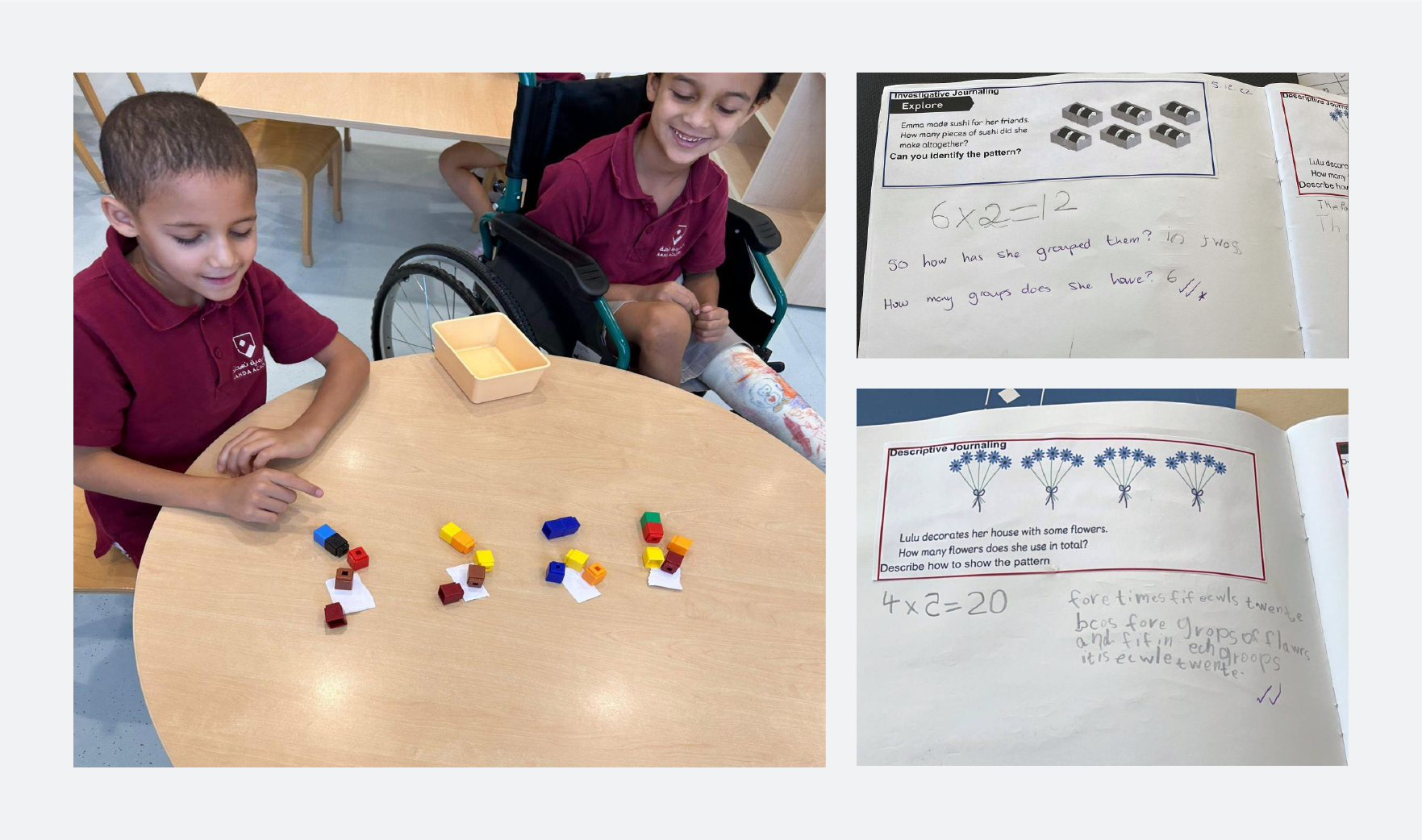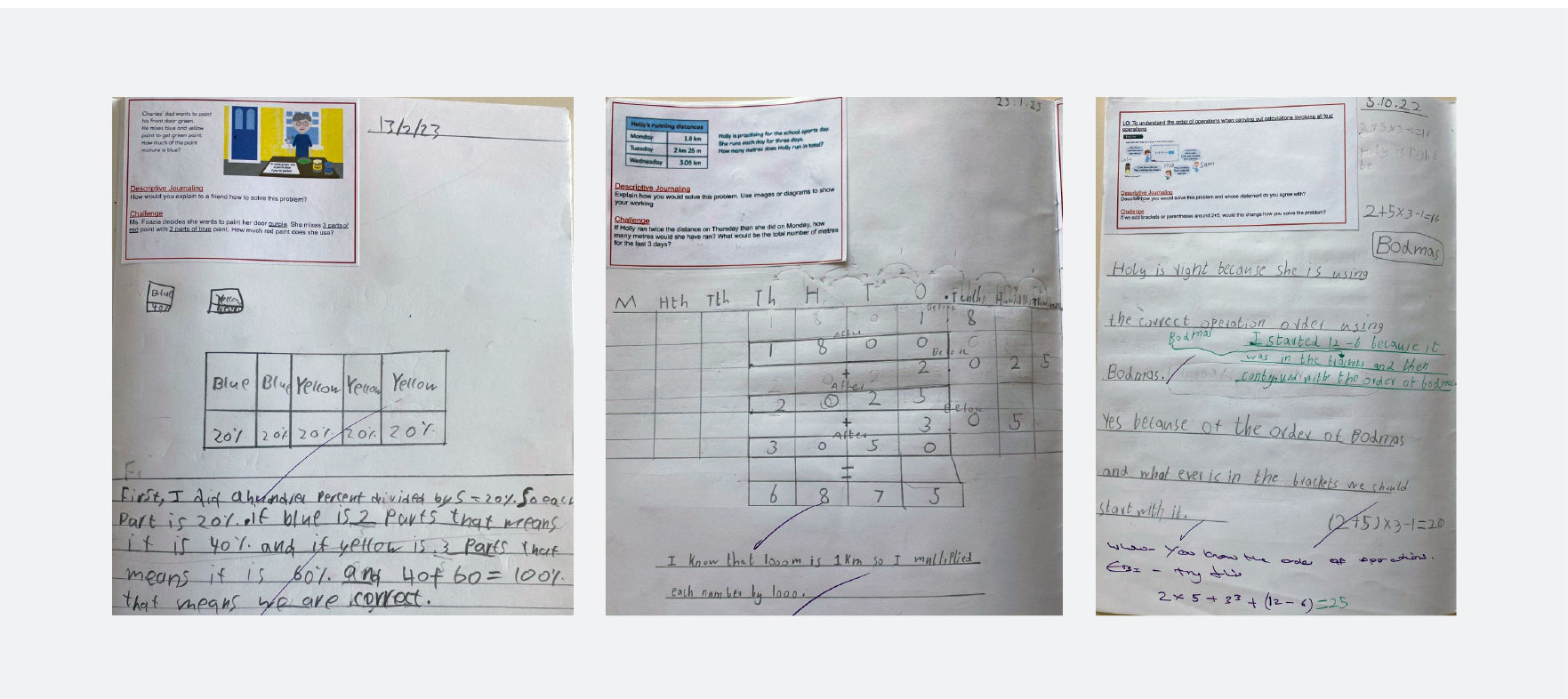How Nahda Academy uses manipulatives to deepen multiplication and division skills

Maths Coordinator
Children who reach Year 4 with strong foundations are quickly able to recall and learn multiplication and division facts for all multiplication tables and by the end of the year, know what is meant by a ‘remainder.’
Editor’s note: Nahda Academy is a Maths — No Problem! Accredited School based in Jeddah, Saudi Arabia
Equal sharing and grouping in Year 1 and 2
In Year 1 at Nahda Academy, children are taught multiplication and division by understanding ‘sharing’ and ‘grouping’ equally. This is done in a range of ways using various concrete resources such as cubes, bottles and even playdough.
Using concrete resources works well because it allows children to touch and physically place objects into groups or to see what is meant by ‘sharing equally.’ It also leads to discussion with their peers about what they are doing and is a great opportunity for teachers to reinforce, and for children to grasp, some of the key mathematical vocabulary.
By the end of Year 2, children are proficient in their multiplication tables for 2, 5 and 10 and understand how to represent an equation with a pictorial representation as a result of the foundation blocks being built through the use of concrete resources.

Pictorial representations in Year 3 and Year 4
In Year 3 children are expected to use their prior knowledge of ‘equal grouping’ or ‘sharing equally’ to understand various pictorial representations and how multiplication and division ‘families’ can be formed.
At this stage, children are encouraged to use mental arithmetic to recall multiplication facts. Any gaps in their understanding of multiplication or division are supported by providing scaffolds in the form of concrete resources and then building on this to help them achieve fluency.
Children who reach Year 4 with strong foundations are quickly able to recall and learn multiplication and division facts for all multiplication tables and by the end of the year, know what is meant by a ‘remainder.’
Concrete resources and manipulatives are used continuously to allow children to explore and investigate at length. This allows them to reinforce their understanding while physically seeing what is meant by a remainder. Pictorial representations in the books are interpreted through the use of manipulatives and discussion before formal written methods are introduced.
The aim at this stage is to allow children to work at their own pace but provide them with the scaffolding, modelling and questioning that will aid their understanding and fluency.

Transform Your Maths Assessment
Insights — our online assessment tool — gives you instant, powerful data to identify gaps and improve results.

Fluency and collaboration in Year 5 and Year 6
Although children in Year 5 and Year 6 are striving for fluency, we continue to allow them the opportunity to explore with concrete resources or use pictorial representations on whiteboards etc. Encouraging collaboration in each lesson provides opportunities for students to learn from each other and explore a variety of methods which they can use and journal about as they evaluate their efficiency.
Due to being a fairly new and expanding school, we found that in Year 6, students started at different levels so it was important to review what was meant by multiplication and to begin using concrete resources and a Place Value chart. For example, when multiplying by 10, students could use manipulatives to show what happens to a number that is getting 10 times greater and also represent this on a Place Value chart. This helped children understand what was happening when using formal written methods such as short and long multiplication and division and they were able to represent this with pictorial representations either on whiteboards or during journaling activities.


Overall, we have found that the use of concrete and pictorial representations have been vital to children at our school being able to work at greater depth and achieve fluency in multiplication and division. I hope that this short blog has been able to demonstrate precisely how it was achieved at Nahda Academy.
